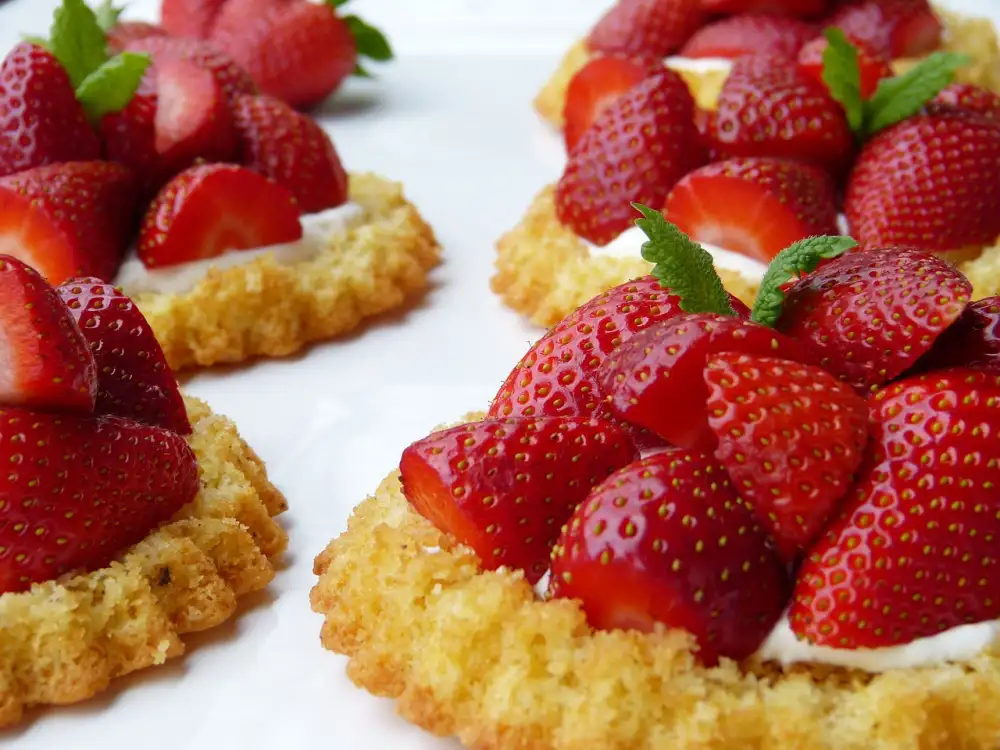Discover the Benefits of Gluten-Free Flour: Elevate Your Health with Wheat-Free Baking

Gluten-free flour has gained popularity in recent years as more people are becoming aware of the potential health benefits it offers. Gluten, a protein found in wheat and other grains, can cause digestive issues and other health problems for individuals with gluten sensitivity or celiac disease. By using gluten-free flour, those who need to avoid gluten can still enjoy delicious baked goods without compromising their health. In this article, we will explore the benefits of using gluten-free flour and provide tips on how to incorporate it into your diet for a healthier lifestyle.
Understanding gluten and its effects on health
Understanding gluten and its effects on health is crucial when considering the benefits of using gluten-free flour. Gluten is a protein found in wheat, barley, and rye that gives dough its elasticity. However, for some individuals, consuming gluten can lead to adverse health effects.
One common condition associated with gluten consumption is celiac disease. This autoimmune disorder causes damage to the small intestine when gluten is ingested, leading to nutrient deficiencies and digestive issues. Other individuals may have non-celiac gluten sensitivity, experiencing similar symptoms without the intestinal damage.
Gluten has also been linked to inflammation in the body, which can contribute to various health problems such as joint pain, skin issues, and even neurological disorders. By eliminating or reducing gluten intake through the use of gluten-free flour, individuals can potentially alleviate these symptoms and improve their overall well-being.
It's important to note that not everyone needs to avoid gluten. For those with no sensitivities or allergies, consuming moderate amounts of gluten-containing products is generally safe. However, for those who do experience negative effects from gluten consumption, opting for gluten-free flour can be a beneficial choice for their health.
Benefits of using gluten-free flour
Using gluten-free flour in your baking can bring a myriad of benefits to your health. Firstly, it promotes better digestion as it is easier for the body to break down compared to traditional wheat flour. This can alleviate symptoms such as bloating and stomach discomfort. Additionally, gluten-free flour can help stabilize blood sugar levels, making it an excellent choice for individuals with diabetes or those looking to manage their weight. Moreover, using gluten-free flour can improve nutrient absorption, ensuring that your body gets the most out of the food you consume. Lastly, it allows individuals with celiac disease or gluten sensitivities to enjoy baked goods without any adverse reactions. By incorporating gluten-free flour into your recipes, you are not only elevating your health but also expanding your culinary horizons.
Types of gluten-free flours available
When it comes to gluten-free baking, there are numerous types of flours available as alternatives to traditional wheat flour. These flours are derived from grains, nuts, and legumes that do not contain gluten. Some popular options include almond flour, coconut flour, rice flour, oat flour, and chickpea flour. Each type of flour has its own unique flavor and texture, allowing for a wide range of culinary possibilities. Experimenting with different gluten-free flours can add depth and variety to your baking repertoire while catering to specific dietary needs.
Tips for baking with gluten-free flour
1. Use a blend of gluten-free flours: Gluten-free baking often requires a combination of different flours to achieve the desired texture and taste. Experiment with blends that include rice flour, almond flour, tapioca flour, and potato starch.
2. Add binders and thickeners: Since gluten provides structure in traditional baking, it's important to add binders like xanthan gum or guar gum to mimic its effects. These ingredients help prevent your baked goods from becoming crumbly.
3. Increase moisture content: Gluten-free flours tend to absorb more moisture than wheat flour. To prevent dryness, add extra liquid such as milk or oil to your recipes. This will help keep your baked goods moist and tender.
4. Be mindful of rising agents: Gluten-free flours may not rise as much as wheat flour due to the absence of gluten's elasticity. Consider using additional leavening agents like baking powder or yeast to ensure proper rising.
5. Mix thoroughly and let it rest: Gluten-free batters can benefit from thorough mixing to develop structure and allow the ingredients to hydrate properly. After mixing, let the batter rest for about 10-15 minutes before baking for better results.
6. Adjust baking time and temperature: Since gluten-free batters behave differently than those containing gluten, you may need to adjust your baking time and temperature accordingly. Keep an eye on your baked goods and use a toothpick test for doneness.
By following these tips, you can enhance your gluten-free baking experience and achieve delicious results that rival traditional wheat-based recipes!
Incorporating gluten-free flour into a healthy diet
Incorporating gluten-free flour into a healthy diet is a great way to elevate your health and enjoy delicious baked goods. By replacing traditional wheat flour with gluten-free alternatives, you can reduce inflammation, improve digestion, and boost nutrient intake. Experiment with different gluten-free flours like almond, coconut, or quinoa to add variety and nutrition to your meals. Remember to read labels carefully and choose flours that are certified gluten-free for optimal health benefits.
Common misconceptions about gluten-free flour
1. It's tasteless: One of the biggest misconceptions about gluten-free flour is that it lacks flavor. While it may have a slightly different taste compared to traditional wheat flour, there are many gluten-free flours available that can add a unique and delicious flavor to your baked goods.
2. It's only for people with celiac disease: Another common misconception is that gluten-free flour is only necessary for individuals with celiac disease or gluten sensitivity. However, anyone can benefit from incorporating gluten-free options into their diet, as it can promote better digestion and overall health.
3. It's difficult to work with: Many people believe that baking with gluten-free flour is challenging and results in dry, crumbly textures. While it does require some adjustments in recipes and techniques, with the right knowledge and practice, you can achieve moist and delicious baked goods using gluten-free flour.
4. It's less nutritious: Some assume that by eliminating gluten from their diet, they are also sacrificing essential nutrients found in wheat-based products. However, many gluten-free flours are made from nutrient-rich alternatives like almond, coconut, or quinoa flour, which offer a variety of vitamins, minerals, and healthy fats.
5. It's expensive: There is a common belief that gluten-free products are more expensive than their traditional counterparts. While some specialty items may come at a higher price point, there are plenty of affordable options available in most grocery stores or online retailers.
By debunking these misconceptions about gluten-free flour, we can encourage more people to explore its benefits and embrace its versatility in creating healthier and delicious dishes.
In conclusion, embracing the versatility of gluten-free flour can lead to a healthier lifestyle. By eliminating gluten from our diets, we can reduce inflammation, improve digestion, and boost overall well-being. Gluten-free flours offer a wide range of options for baking delicious and nutritious treats without compromising taste or texture. Whether you have celiac disease or simply want to explore new culinary possibilities, incorporating gluten-free flour into your diet is a step towards unleashing your culinary creativity while prioritizing your health. So why not give it a try and elevate your cooking experience with the benefits of wheat-free baking?
Published: 20. 12. 2023
Category: Food



